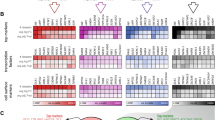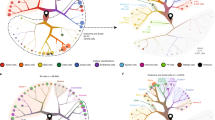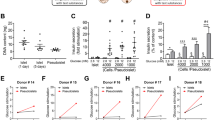Abstract
Detailed characterization of human pancreatic islets is key to elucidating the pathophysiology of all forms of diabetes, especially type 2 diabetes. However, access to human pancreatic islets is limited. Pancreatic tissue for islet retrieval can be obtained from brain-dead organ donors or from individuals undergoing pancreatectomy, often referred to as ‘living donors’. Different protocols for human islet procurement can substantially impact islet function. This variability, coupled with heterogeneity between individuals and islets, results in analytical challenges to separate genuine disease pathology or differences between human donors from experimental noise. There are currently no international guidelines for human donor phenotyping, islet procurement and functional characterization. This lack of standardization means that substantial investments from multiple international efforts towards improved understanding of diabetes pathology cannot be fully leveraged. In this Perspective, we overview the status of the field of human islet research, highlight the challenges and propose actions that could accelerate research progress and increase understanding of type 2 diabetes to slow its pandemic spreading.
This is a preview of subscription content, access via your institution
Access options
Access Nature and 54 other Nature Portfolio journals
Get Nature+, our best-value online-access subscription
$29.99 / 30 days
cancel any time
Subscribe to this journal
Receive 12 digital issues and online access to articles
$119.00 per year
only $9.92 per issue
Buy this article
- Purchase on Springer Link
- Instant access to full article PDF
Prices may be subject to local taxes which are calculated during checkout




Similar content being viewed by others
References
Rickels, M. R. & Robertson, R. P. Pancreatic islet transplantation in humans: recent progress and future directions. Endocr. Rev. 40, 631–668 (2019).
Alonso, L. et al. TIGER: the gene expression regulatory variation landscape of human pancreatic islets. Cell Rep. 37, 109807 (2021).
Asplund, O. et al. Islet Gene View—a tool to facilitate islet research. Preprint at bioRxiv https://doi.org/10.1101/435743 (2020).
Brissova, M. et al. The Integrated Islet Distribution Program answers the call for improved human islet phenotyping and reporting of human islet characteristics in research articles. Diabetologia 62, 1312–1314 (2019).
Kaestner, K. H., Powers, A. C., Naji, A. & Atkinson, M. A. NIH initiative to improve understanding of the pancreas, islet, and autoimmunity in type 1 diabetes: the Human Pancreas Analysis Program (HPAP). Diabetes 68, 1394–1402 (2019).
Marchetti, P. et al. Fostering improved human islet research: a European perspective. Diabetologia 62, 1514–1516 (2019).
Solimena, M. et al. Systems biology of the IMIDIA biobank from organ donors and pancreatectomised patients defines a novel transcriptomic signature of islets from individuals with type 2 diabetes. Diabetologia 61, 641–657 (2018).
Fadista, J. et al. Global genomic and transcriptomic analysis of human pancreatic islets reveals novel genes influencing glucose metabolism. Proc. Natl Acad. Sci. USA 111, 13924–13929 (2014).
Rosengren, A. H. et al. Reduced insulin exocytosis in human pancreatic β-cells with gene variants linked to type 2 diabetes. Diabetes 61, 1726–1733 (2012).
Taneera, J. et al. Identification of novel genes for glucose metabolism based upon expression pattern in human islets and effect on insulin secretion and glycemia. Hum. Mol. Genet. 24, 1945–1955 (2015).
Taneera, J. et al. A systems genetics approach identifies genes and pathways for type 2 diabetes in human islets. Cell Metab. 16, 122–134 (2012).
Viñuela, A. et al. Genetic variant effects on gene expression in human pancreatic islets and their implications for T2D. Nat. Commun. 11, 4912 (2020).
Marselli, L. et al. Persistent or transient human beta cell dysfunction induced by metabolic stress: specific signatures and shared gene expression with type 2 diabetes. Cell Rep. 33, 108466 (2020).
Wigger, L. et al. Multi-omics profiling of living human pancreatic islet donors reveals heterogeneous beta cell trajectories towards type 2 diabetes. Nat. Metab. 3, 1017–1031 (2021).
Marchetti, P., Suleiman, M. & Marselli, L. Organ donor pancreases for the study of human islet cell histology and pathophysiology: a precious and valuable resource. Diabetologia 61, 770–774 (2018).
Krogvold, L. et al. Pancreatic biopsy by minimal tail resection in live adult patients at the onset of type 1 diabetes: experiences from the DiViD study. Diabetologia 57, 841–843 (2014).
Atkinson, M. A. Pancreatic biopsies in type 1 diabetes: revisiting the myth of Pandora’s box. Diabetologia 57, 656–659 (2014).
Henquin, J. C. Glucose-induced insulin secretion in isolated human islets: does it truly reflect β-cell function in vivo? Mol. Metab. 48, 101212 (2021).
Negi, S. et al. Analysis of beta-cell gene expression reveals inflammatory signaling and evidence of dedifferentiation following human islet isolation and culture. PLoS ONE 7, e30415 (2012).
Mawla, A. M. & Huising, M. O. Navigating the depths and avoiding the shallows of pancreatic islet cell transcriptomes. Diabetes 68, 1380–1393 (2019).
Barklin, A. Systemic inflammation in the braindead organ donor. Acta Anaesthesiol. Scand. 53, 425–435 (2009).
Boggi, U. et al. First world consensus conference on pancreas transplantation: part I—methods and results of literature search. Am. J. Transplant. 21, 1–16 (2021).
Berney, T. et al. Utilization of organs from donors after circulatory death for vascularized pancreas and islet of Langerhans transplantation: recommendations from an expert group. Transpl. Int. 29, 798–806 (2016).
Markmann, J. F. et al. The use of non-heart-beating donors for isolated pancreatic islet transplantation. Transplantation 75, 1423–1429 (2003).
Barovic, M. et al. Metabolically phenotyped pancreatectomized patients as living donors for the study of islets in health and diabetes. Mol. Metab. 27S, S1–S6 (2019).
Mezza, T. et al. Increased beta-cell workload modulates proinsulin-to-insulin ratio in humans. Diabetes 67, 2389–2396 (2018).
Mezza, T. et al. Pancreaticoduodenectomy model demonstrates a fundamental role of dysfunctional beta cells in predicting diabetes. J. Clin. Invest. 131, e146788 (2021).
Niwano, F. et al. Glucose metabolism after pancreatectomy: opposite extremes between pancreaticoduodenectomy and distal pancreatectomy. J. Clin. Endocrinol. Metab. 106, e2203–e2214 (2021).
Wang, Y. et al. Paraneoplastic beta cell dedifferentiation in nondiabetic patients with pancreatic cancer. J. Clin. Endocrinol. Metab. 105, dgz224 (2020).
Panzer, J. K., Cohrs, C. M. & Speier, S. Using pancreas tissue slices for the study of islet physiology. Methods Mol. Biol. 2128, 301–312 (2020).
Brereton, M. F., Vergari, E., Zhang, Q. & Clark, A. Alpha-, delta- and PP-cells: are they the architectural cornerstones of islet structure and coordination? J. Histochem. Cytochem. 63, 575–591 (2015).
Ahlqvist, E. et al. Novel subgroups of adult-onset diabetes and their association with outcomes: a data-driven cluster analysis of six variables. Lancet Diabetes Endocrinol. 6, 361–369 (2018).
Walker, J. T. et al. The human islet: mini-organ with mega impact. Endocr. Rev. 42, 605–657 (2021).
Manning Fox, J. E. et al. Human islet function following 20 years of cryogenic biobanking. Diabetologia 58, 1503–1512 (2015).
Henquin, J. C. The challenge of correctly reporting hormones content and secretion in isolated human islets. Mol. Metab. 30, 230–239 (2019).
Verge, C. F. et al. Combined use of autoantibodies (IA-2 autoantibody, GAD autoantibody, insulin autoantibody, cytoplasmic islet cell antibodies) in type 1 diabetes: combinatorial islet autoantibody workshop. Diabetes 47, 1857–1866 (1998).
Wilkinson, M. D. et al. The FAIR guiding principles for scientific data management and stewardship. Sci. Data 3, 160018 (2016).
Dragan, I., Sparsø, T., Kuznetsov, D., Slieker, R. & Ibberson, M. SwissKnife: an R package for federated data analysis. Preprint at bioRxiv https://doi.org/10.1101/2020.11.17.386813 (2020).
Warnat-Herresthal, S. et al. Swarm Learning for decentralized and confidential clinical machine learning. Nature 594, 265–270 (2021).
Wagner, R. et al. Pathophysiology-based subphenotyping of individuals at elevated risk for type 2 diabetes. Nat. Med. 27, 49–57 (2021).
Acknowledgements
We are grateful to all islet donors and their families for their support in this endeavour. We thank F. J. Moller for helping with figure preparation. A.L.G. is a Wellcome Senior Fellow in Basic Biomedical Science. A.L.G. is funded by Wellcome (200837) and NIDDK (U01-DK105535, U01-DK085545, UM1DK126185, U01DK123743 and U24DK098085) and the Stanford Diabetes Research Center (NIDDK award P30DK116074). P.M. is supported by the Italian Ministry of University and Research, PRIN 2017, Molecular and Pathophysiological Heterogeneity of Autoimmune Diabetes: Implication for Precision Medicine, 2017KAM2R5_005. A.C.P. is funded by the HIRN (RRID: SCR_014393), the Human Pancreas Analysis Program (RRID: SCR_016202), DK106755, DK123716, DK112232, DK112217 and DK20593 (Vanderbilt Diabetes Research and Training Center), The Leona M. and Harry B. Helmsley Charitable Trust, and the Department of Veterans Affairs (BX000666). P.R. is funded by the Medical Research Council, the Swedish Research Council and The Leona M. and Harry B. Helmsley Charitable Trust. M. Sander is supported by grants from the National Institutes of Health (R01DK078803, R01DK068471, R01DK114427, R01DK122607, U01DK120429, U01HG012059 and UH3DK122639). M. Solimena is funded by the BMBF-German Center for Diabetes Research (DZD e.V.), the Deutsche Forschungsgemeinschaft (DFG; grants SO 818/10-1 and IRTG2251) and the DFG-ANR programme (SO 818/6-1). This work is also supported with funds by the Innovative Medicines Initiative 2 Joint Undertaking under grant agreement no. 115881 (RHAPSODY) to M. Solimena, P.M. and M.I., and no. 115797 (INNODIA) and no. 945268 (INNODIA HARVEST) to M. Solimena and P.M. This Joint Undertaking receives support from the EU Horizon 2020 research and innovation programme, EFPIA, JDRF and The Leona M. and Harry B. Helmsley Charitable Trust. This work is further supported by the Swiss State Secretariat for Education‚ Research and Innovation under contract number 16.0097-2. The opinions expressed and arguments used herein do not necessarily reflect the official views of these funding bodies.
Author information
Authors and Affiliations
Contributions
All authors contributed to the planning and writing of the article and the conception of the figures.
Corresponding authors
Ethics declarations
Competing interests
A.L.G. and A.C.P. are members of the HPAP. A.L.G. is a member of the IIDP. A.L.G. and P.M are members of the Horizon 2020-funded T2DSystems. A.L.G., A.C.P. and M. Sander are members of the HIRN. P.M., M.I. and M. Solimena are members of RHAPSODY and IMIDIA; P.M. and M.I. are members of INNODIA. Through their membership of these consortia, the authors have received financial support as outlined in the acknowledgements.
Peer review
Peer review information
Nature Metabolism thanks Miriam Cnop, Michael Stitzel and the other, anonymous, reviewer for their contribution to the peer review of this work. Primary Handling Editor: Christoph Schmitt, in collaboration with the Nature Metabolism team.
Additional information
Publisher’s note Springer Nature remains neutral with regard to jurisdictional claims in published maps and institutional affiliations.
Rights and permissions
Springer Nature or its licensor holds exclusive rights to this article under a publishing agreement with the author(s) or other rightsholder(s); author self-archiving of the accepted manuscript version of this article is solely governed by the terms of such publishing agreement and applicable law.
About this article
Cite this article
Gloyn, A.L., Ibberson, M., Marchetti, P. et al. Every islet matters: improving the impact of human islet research. Nat Metab 4, 970–977 (2022). https://doi.org/10.1038/s42255-022-00607-8
Received:
Accepted:
Published:
Issue Date:
DOI: https://doi.org/10.1038/s42255-022-00607-8
This article is cited by
-
Illuminating the complete ß-cell mass of the human pancreas- signifying a new view on the islets of Langerhans
Nature Communications (2024)
-
Beta cell dysfunction induced by bone morphogenetic protein (BMP)-2 is associated with histone modifications and decreased NeuroD1 chromatin binding
Cell Death & Disease (2023)
-
Genetic risk converges on regulatory networks mediating early type 2 diabetes
Nature (2023)



